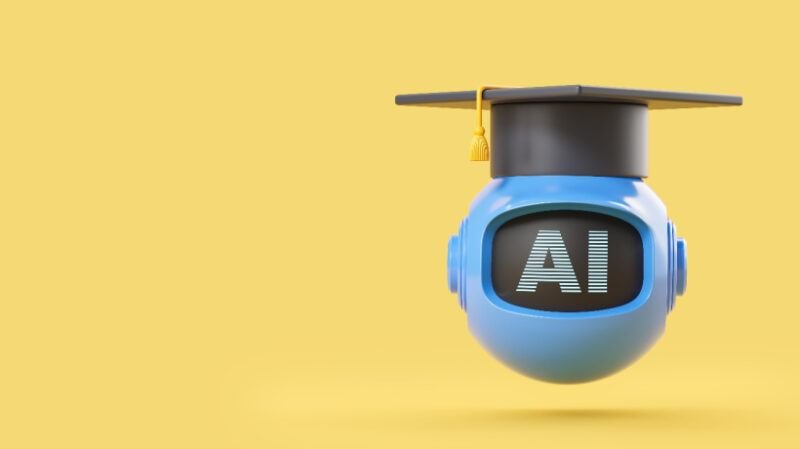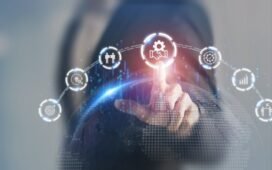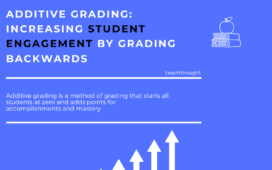
Boosting Curriculum Development In Higher Education With AI
The integration of Artificial Intelligence (AI) into higher education is redefining traditional models of curriculum development and student assessment. As universities and colleges around the world explore AI-driven innovations, the potential to improve academic programs and enhance learning outcomes becomes increasingly apparent. This article examines how AI is reshaping curriculum design, influencing student outcomes, and addressing the challenges that arise as institutions adopt AI in their educational frameworks.
AI’s Role In Curriculum Development
1. Personalized Curriculum Design
AI-powered systems allow institutions to create personalized curricula tailored to the needs and capabilities of individual students. By analyzing student performance data, learning styles, and preferences, AI can help educators design flexible programs that address diverse learning needs. Such adaptive curricula offer an individualized learning path, ensuring students remain engaged and motivated while progressing at their own pace.
2. Dynamic Curriculum Adjustments
AI provides real-time data on student performance, which can be used to dynamically adjust course content. This ensures that the curriculum remains relevant and responsive to student needs. For instance, AI can flag when certain concepts require further clarification, prompting educators to revisit challenging topics or introduce supplementary materials.
3. Data-Driven Curriculum Development
Institutions now have access to vast amounts of data on student engagement, course completion rates, and feedback. AI tools can analyze this data to identify patterns and trends that guide curriculum improvement. This data-driven approach ensures that courses are constantly evolving to meet the demands of the modern job market and student expectations.
4. Automated Course Creation
AI can significantly streamline the process of creating and updating course content. AI-driven platforms are capable of generating course outlines, assignments, and even assessments based on learning objectives and industry standards. This automation frees up valuable time for educators to focus on higher-level tasks, such as mentoring students and conducting research.
The Impact Of AI On Student Outcomes
1. Enhanced Learning Experience
One of the most significant impacts of AI on student outcomes is the enhancement of the overall learning experience. Through adaptive learning platforms, AI provides personalized support to students, offering immediate feedback and adjusting the difficulty level of materials based on individual progress. This personalized approach leads to deeper engagement, improved retention of knowledge, and better academic performance.
2. Improved Retention And Graduation Rates
AI systems, particularly those using predictive analytics, can identify students at risk of underperforming or dropping out. By recognizing patterns in attendance, participation, and assessment scores, AI tools can trigger early interventions, such as offering additional tutoring or counseling services. Such proactive measures improve retention rates and help more students graduate on time.
3. Fostering Lifelong Learning
AI fosters a shift toward lifelong learning by equipping students with tools for continuous education. AI-driven learning platforms offer personalized, on-demand learning opportunities that enable students to acquire new skills even after graduation. This shift aligns with the modern economy’s demand for flexible, continuously updated skillsets.
4. Equity In Learning Outcomes
AI can play a crucial role in leveling the playing field for students from diverse backgrounds. By identifying gaps in student knowledge early and providing targeted support, AI helps bridge the divide between students who might otherwise fall behind due to external factors such as socioeconomic status or language barriers.
Challenges In AI Integration
1. Bias In AI Algorithms
Despite its benefits, AI poses challenges, particularly when it comes to bias in algorithms. If not carefully designed, AI tools can unintentionally reinforce existing inequalities in education. For instance, AI models trained on biased data may favor certain demographics over others, leading to unequal treatment. Addressing these biases requires a conscious effort by institutions to ensure AI systems are transparent and fair.
2. Data Privacy And Security
With AI systems collecting and analyzing large amounts of student data, privacy and security concerns become paramount. Institutions must establish robust data governance policies to protect sensitive information and ensure compliance with privacy regulations. Failure to do so can erode student trust and hinder the adoption of AI technologies.
3. Educator Readiness
Successful integration of AI into higher education requires that educators are adequately trained to use these tools. However, many institutions face resistance from faculty who are not familiar with AI technologies or are skeptical of their potential. Institutions must invest in professional development and create a supportive culture that embraces AI-driven innovations.
4. Financial Implications
The costs associated with implementing AI technologies can be prohibitive, especially for institutions with limited resources. From purchasing AI software to maintaining and upgrading these systems, the financial burden is considerable. Institutions must carefully weigh the long-term benefits against the initial investment to ensure the sustainability of AI integration.
The Path Forward For AI In Higher Education Institutions
To fully harness the potential of AI in curriculum development and student outcomes, institutions need to adopt a balanced, strategic approach. Key recommendations include:
1. Invest In Ethical AI Development
Institutions must prioritize the development of AI systems that are transparent, fair, and accountable. By working with experts in AI ethics, universities can ensure that AI tools are free from bias and provide equitable opportunities for all students.
2. Foster Collaboration Between Educators And AI Developers
Close collaboration between educators and AI developers is essential to create tools that genuinely enhance the learning experience. Educators should be involved in the design process, offering insights into pedagogical best practices and ensuring that AI systems align with educational goals.
3. Build A Culture Of Continuous Improvement
AI-driven curriculum development is an ongoing process that requires institutions to embrace a culture of continuous improvement. By regularly reviewing student data, soliciting feedback, and adjusting course content, institutions can ensure that their programs remain relevant and effective.
4. Ensure Financial Sustainability
While AI implementation can be costly, institutions can explore creative funding options, such as partnerships with technology companies, government grants, or cost-sharing initiatives between departments. These strategies can help alleviate the financial burden while ensuring that AI remains a key component of institutional strategy.
Conclusion
AI is reshaping the landscape of curriculum development and student outcomes in higher education, offering opportunities for personalized learning, improved student engagement, and enhanced academic success. However, challenges such as algorithmic bias, data privacy concerns, and financial constraints must be addressed for AI to realize its full potential in education. By investing in ethical AI, fostering collaboration, and adopting a culture of continuous improvement, institutions can create a more equitable, effective, and future-ready learning environment.
As AI continues to evolve, its role in higher education will undoubtedly expand, offering new possibilities for curriculum development and student success. The key lies in balancing technological innovation with the human element of education, ensuring that AI serves as a powerful tool for enhancing, not replacing, the essential roles of educators and learners.















